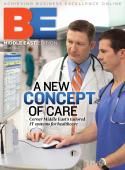Campus for the future┬áKeith Regan reports on how the building and renovation projects at the University of North Carolina at Chapel Hill are coming together to create a campus built for todayÔÇÖs students and tomorrowÔÇÖs discoveries. The University of North Carolina at Chapel Hill has long been known for its hugely successful athletics program and increasingly as an internationally prominent center of academic and research excellence. But for most of this decade, the University has also been known for its construction cranes and renovation projects. Since North Carolina voters backed a $3.1 billion higher education bond package that set aside $515 million for 49 projects in 2000, UNC-Chapel Hill has added or renovated about 7 million square feet of buildings. The University has also invested funding from faculty research grants and private gifts to the successful Carolina First Campaign to leverage the state bond funding and expand the total campus building program to more than $2.1 billion, among the largest at any major American university. The University has completed more than 100 projects since 2000. They include facilities for teaching and research, as well as student housing and infrastructure. ÔÇ£In the past seven years or so, itÔÇÖs as if weÔÇÖve built a medium-sized research university right in the middle of an existing campus,ÔÇØ says Bruce Runberg, associate vice chancellor for facilities planning and construction at the University. The boom has taken the campus from 13 million square feet of buildings and facilities to 18.5 million square feet today. ÔÇ£And weÔÇÖre still building,ÔÇØ Runberg adds. In fact, a major project still in the design phases at UNC could add as much as 8 million additional square feet of mixed-use space in coming decades. Carolina North will be a planned research and mixed-use academic campus on a 900-acre tract about two miles north of the main campus. The UniversityÔÇÖs current plans, which depend on available funding and collaboration with the Town of Chapel Hill, call for as much as 2 million square feet of new facilities in the next 15 years, with the rest having a time horizon of as much as 50 years. Back on campus, the building boom was aided by the fact that a master planning process had been undertaken starting in 1998 and ending in 2001, which meant that a building expansion program plan was largely in place. ÔÇ£That helped us, because it wasnÔÇÖt like we were hit cold when all these projects were funded at once,ÔÇØ Runberg says. ÔÇ£We had some designs on the shelf, and others were starting to be formed.ÔÇØ Still, completing that amount of construction in a relatively short time brought its share of challenges. Many were simply logistical in nature. Whenever possible, the campus tried to time work so that mid-semester disruptions were kept to a minimum, but many departments or groups of departments had be moved, often more than once, to accommodate renovations and new buildings. ÔÇ£WeÔÇÖd have departments moving into temporary space and then moving back into new space. Then we also had about 110 classrooms that we renovated, and we couldnÔÇÖt have them all offline at the same time,ÔÇØ Runberg notes. In 2004 and 2005, as many as 45 departments were being moved to enable projects to go forward, with RunbergÔÇÖs department developing an extensive sequencing planÔÇöcarried out with the assistance of outside consultants that coordinate the moves themselvesÔÇöthat enabled the relocations to be handled with minimal disruption. Because the work was spread out over several years, UNC was able to keep close to its original budgets even for large-scale projects. The peak years of UNCÔÇÖs building coincided with a national construction boom and a spike in the cost of raw materials such as steel and concrete. Fortunately, savings on projects done during the first years of the time frame, when the economy was relatively tame, could be used to carry the system through those go-go times. Much of the new construction was designed and built with sustainability in mind. Even as early as 2000, the University had projects in the pipeline with green elements to them. ÔÇ£All the designs started after that had some elements of LEED and high-performance buildings in them,ÔÇØ Runberg says. Early on, the University built a new building with a roof garden to minimize runoff. ÔÇ£People wondered what we were doing, and since then, thatÔÇÖs become a very common design element.ÔÇØ The University has sent 14 contract administrators on its staff through LEED accreditation programs. ÔÇ£WeÔÇÖre very much interested in finding ways to improve design with respect to making the campus more energy-efficient and sustainable.ÔÇØUNC-Chapel Hill has long been noted for its aesthetic qualities, frequently being named among the most beautiful college campuses in the country. For some time, the campus was split into two halves. The northern portion was where most academic buildings were located and housed more of the historical, architecturally pleasing buildings and green spaces. The newer, southern portion was where more modern student housing was located as well as UNC Hospitals. The building work has enabled design elements from the north campus to be brought south and also enabled the two campus componentsÔÇölong separated by a steep ravineÔÇöto be knitted together. Serving that function is the Rams Head Center, a project that includes a 700-space parking deck and a 30,000-square-foot dining hall and student recreation center. Rams Head also features a large green plaza and serves as a focal point for students from both parts of the campus. Runberg says the campus continues to see significant construction activity, though the pace has slowed somewhat since the peak years of 2004 and 2005. The work will continue for the foreseeable future, however, but will result in a campus with not only modern academic and research facilities but also more modern and efficient infrastructure. ÔÇ£WeÔÇÖve dug up every road on campus along the way; some of them a few times,ÔÇØ he adds. ÔÇ£We added buildings for bioinformatics and genomicsÔÇödisciplines that we hadnÔÇÖt even heard of a couple decades ago. WeÔÇÖre building a campus for the future.ÔÇØ┬á









